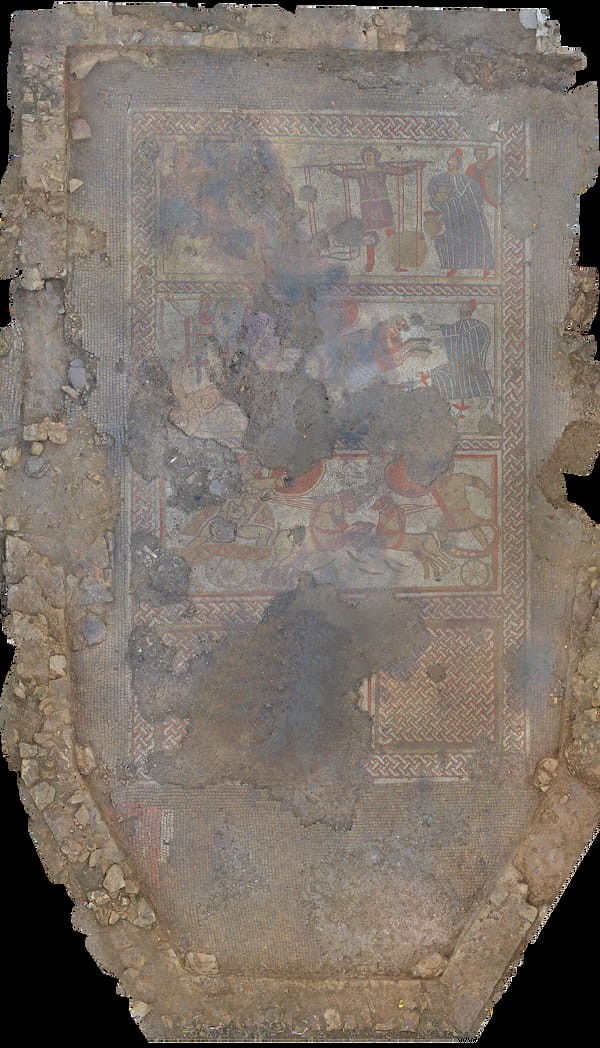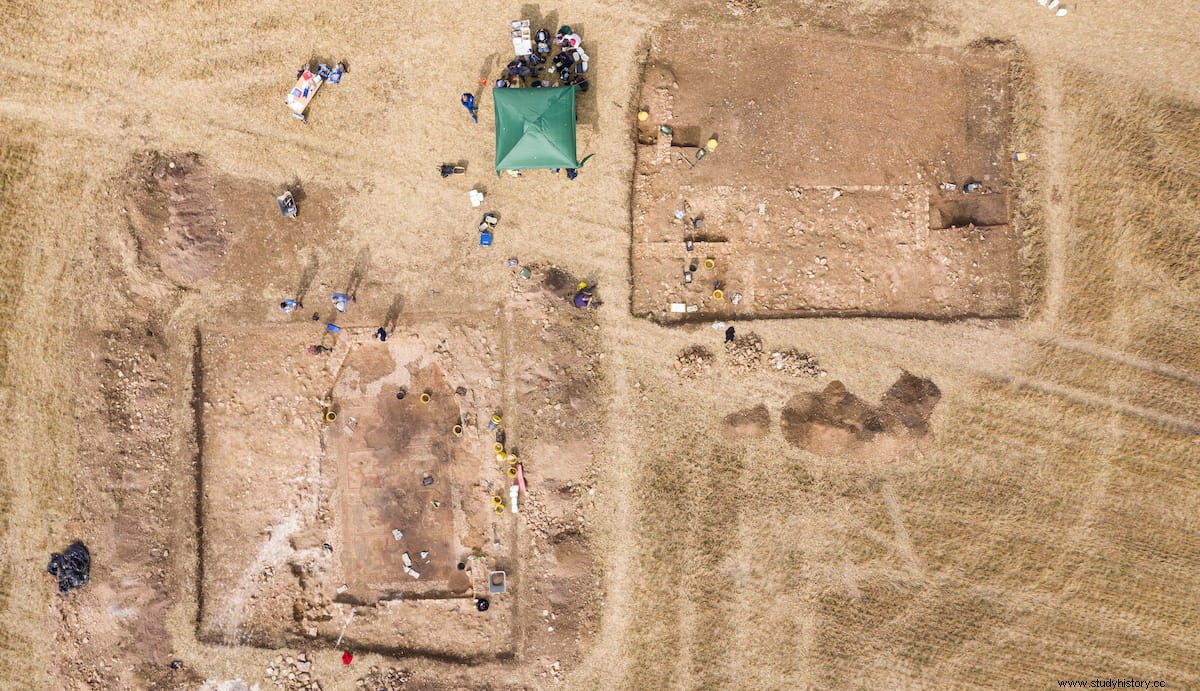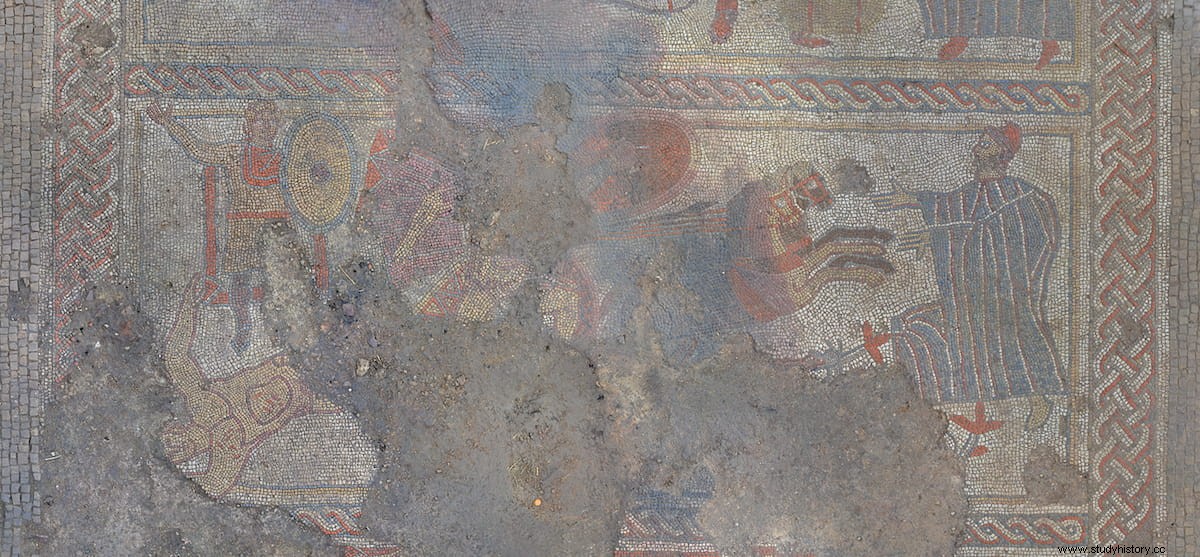The initial discovery of the mosaic was made in 2020 by Jim Irvine, son of the owner of the agricultural field where it was found, Brian Naylor, who contacted the archaeological team at Leicestershire County Council, heritage advisers to the authority. local. Given the exceptional nature of this discovery, Historic England was able to secure funding for urgent archaeological investigations of the site by the University of Leicester in August 2020.
Excavations involving staff and students from the University of Leicester School of Archeology and Ancient History examined more parts of the site in September 2021. The mosaic remains measure 11 by almost 7 meters and represent part of the story of the Greek hero Achilles.

The work forms the floor of what is believed to have been a large dining room or entertainment area. Mosaics were used in various private and public buildings throughout the Roman Empire, often featuring famous figures from history and mythology. However, the Rutland mosaic is unique in the UK in that it shows Achilles and his battle with Hector at the end of the Trojan War, and is one of the few extant examples in all of Europe.
The room is part of a large building of a villa occupied in late Roman times, between the 3rd and 4th centuries AD. The villa is also surrounded by other buildings and features revealed by a geophysical survey and archaeological assessment, including what appear to be corridor-like barns, circular structures, and a possible bathhouse, all within a series of ditches. It is likely that the complex was occupied by a wealthy individual with a knowledge of classical literature.
Fire damage and mosaic breakage suggest that the site was later reused. Other evidence discovered is the finding of human remains among the rubble that covers the mosaic. These burials are believed to have been made after the building had ceased to be occupied and, although their exact age is currently unknown, they postdate the mosaic but are situated in relation to the villa building, suggesting a very late date of Roman or early medieval times. Its discovery offers insight into how the site may have been used during this relatively little-known post-Roman period in history.

The evidence recovered from the site will be analyzed by the University of Leicester, and by specialists from Historic England and from across the UK, including David Neal, the country's leading mosaic research expert. The site has been thoroughly examined and recorded as part of recent investigations and has now been filled in and re-covered to protect it for future generations.
The villa complex was found within a farmland in which shallow archaeological remains had been disturbed by plowing and other activities. Historic England is working with the landowner to support the reversion of these fields to sustainable use of meadows and pastures. These types of agri-environmental programs are an essential part of protecting historic and natural environments and have contributed some £13 million a year to the conservation and maintenance of our rural heritage. They help preserve places like the Rutland Mosaic so that people can continue to enjoy and learn about our fascinating history.

In collaboration with the University of Leicester and other stakeholders, Historic England is planning further excavations at the site for 2022. Discussions are underway with Rutland County Council to explore the opportunity for an off-site exhibition and interpretation of the complex of the villa and its finds. The form and scope of this work will be informed by future proposed excavations and will be the subject of a future offer from the National Lottery Heritage Fund. The deposit is currently on private land and is not accessible to the public.
John Thomas, Deputy Director of the University of Leicester Archaeological Services (ULAS) and project manager on the excavations, said:This is without a doubt the most exciting discovery of Roman mosaics in the UK in the last century. It gives us new insights into the attitudes of the people of the time, their links to classical literature, and it also tells us a lot about the individual who commissioned this piece. This is from someone with a knowledge of the classics, who had the money to commission such a detailed work, and it is the first performance of these stories that we have come across in Britain . The fact that we have the broader context of the surrounding complex is also hugely significant, because previous excavations at Roman villas have only been able to capture partial images of settlements like this, but this appears to be a very well preserved example of a villa in full .
Jim Irvine, who initially discovered the remains, said:A walk through the fields with the family turned into an incredible discovery. The discovery of an unusual pottery among the wheat piqued my interest and prompted me to continue investigating. Later, when looking at the satellite images, I saw a very clear crop mark, as if someone had drawn on my computer screen with a piece of chalk! That was really the moment, and the beginning of the story.
